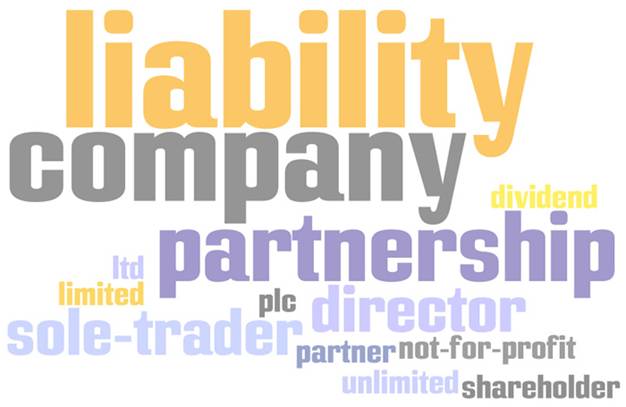Before you organise your operation, you need to identify a business structure that best suit your needs and the demands of your business. You might want to take into consideration issues of complexity in setting up, availability of capital and the tax advantages and disadvantages of each. Today we take a look at the soletrader and partnership structures.

SOLE TRADER
The sole trader or sole proprietorship business structure is by far the easiest to set-up and is favoured by many entrepreneurs. This business is owned and operated by one person who might employ others to work in the business. It is unincorporated, meaning there are no legal formalities involved in setting up. However, depending on what your business will be, you might need to obtain certain licenses to operate, for example, if you decide to sell liquor you must first obtain a liquor license. With this structure you can use your own name or coin a business name that suits you. Sole trader businesses are mostly labour intensive as technology is often too costly and sole traders usually have limited capital available.
Advantages
– There are very few formalities in setting up, except for necessary licenses or permits.
– You incur all the business profits.
– Even if you employ a few workers, you are the major decision-maker.
– Personal satisfaction and pride in owning and running your own business.
– Books are not audited by the Inland Revenue or Tax authorities.
– You are your own boss.
– You can provide personal assistance and attention to your customers because of the ‘smallness’ of the business.
Disadvantages
– You will have unlimited liability, therefore, if the business fails, you stand to lose even your personal possessions in order to pay off its debts.
– It is usually hard to obtain capital and so you will probably have to rely on savings or borrow from family and friends.
– Your prices may be higher because there are no economies of scale (advantages of large scale production) available, as is the case with larger producers who benefit from mass production.
– Usually you have to rely on your own experience and expertise when it comes to decision-making.
– Your working hours will probably be very long, especially in the initial stages of operation.
– It might get lonely at times, especially if you are working alone and have no one to share your vision with.
PARTNERSHIP
A partnership is a business owned and operated by two or more people. The maximum number of partners is twenty, but where it concerns professionals such as accountants or solicitors the numbers could be higher. Partnership has some similarities to the sole trader structure, in that, there are no legal requirements in setting up, except observing local laws as they pertain to licenses or permissions necessary for establishment. Usually the word company follows the business’ name. There could be several types of partners in a partnership, which is usually dependent on their level of involvement in the business.
Types of Partners
Ordinary partners – They play an active role in the day-to-day running of the business.
Sleeping partners – They have a financial interest in the business but do not participate in the day-to-day running of the business.
Limited liability partners – Partners who stand to lose only what they invested in the business in the event of bankruptcy.
Unlimited liability partners – They stand to loose even their personal resources if the business goes bankrupt. Be prepared to work harder if you are an unlimited liability partner because you will undoubtedly want to see things run smoothly and the business thrive.
Advantages
– Business is easy to set-up.
– A group of people working together can share ideas and thus decide on the best course for the business.
– Books are not audited by the Inland revenue or tax authorities neither are they made public.
– More capital is available since partners pool resources.
– Partners share all the profits.
– You and other partners could have the opportunity to specialise in your area of expertise.
– Partners will be involved in the day-to-day running of the business
– Depending on the size of the partnership you may be able to provide personal service to customers.
Disadvantages
– The business incurs unlimited liability so partners (except for limited liability partners) stand to lose not only what they invested in the business but also their personal belongings if the business goes bankrupt and the debts cannot be covered by the business’ resources.
– Each partner is legally and financially liable for the others. Therefore, if one partner is unable to meet his or her liability (debt) the other partners have to stand that liability.
– Profits have to be shared.
– Sometimes partnerships ‘die’ after the death or leaving of one member. Therefore, partners should consider preparing a written agreement that will ensure the continuation of the business in event of this occurring.
It is advisable that if you choose this business structure you should insist that you and your fellow partners sign a Partnership Agreement. It does not have to involve lawyers; you can all come up with a reasonable agreement accepted by all partners.
What should be stated in a Partnership Agreement?
Here are some of the basics you will need to cover:
– Structure and the internal running of the partnership The amount of capital agreed to and is contributed by each partner.
– If partners are very active in the partnership, will they be paid a salary, if so, how much and what are the terms for salary increases?
Will there be an interest charged on drawings (amounts taken from business by partners for personal use) – if so, how much?
Will there be a payment of interest on capital (amount invested in the business by each partner), if so, how much?
– How will profits and losses be shared? Usually profits and losses are shared in the ratio of contributed capital. However, consideration could also be given to the active involvement of each partner, and ration accordingly.
– What will happen if one partner leaves or dies?
These are just guidelines, but it is strongly advised that at least these issues be dealt with, it could save future headaches. Of course, more information could be added based on your concerns and those of the other partners.
Where a Partnership agreement is not drafted there will be no interest charged on drawings or paid on capital. Profits and losses will be shared equally among partners and loans received by partners will attract an interest of 5%.




I seriously love your website.. Great colors & theme.
Did you create this amazing site yourself? Please reply back as I’m planning
to create my own website and want to learn where you got this from
or what the theme is called. Kudos!
I drop a comment when I like a article on a website
or if I have something to contribute to the discussion.
It is a result of the fire communicated in the post I browsed.
And on this article CHOOSING A BUSINESS STRUCTURE
This is the perfect site for anybody who wishes to
find out about this topic. You realize so much its
almost tough to argue with you (not that I actually will
need to…HaHa). You certainly put a fresh spin on a topic that’s been discussed for ages.
Excellent stuff, just great!
This piece of writing is actually a pleasant one it helps new internet people, who are wishing for blogging.
Genuinely when someone doesn’t understand after that its up to other people that they will assist, so here it
happens.
We’re a group of volunteers and opening a brand new scheme in our community.
Your website offered us with helpful info to work on.
You’ve done a formidable job and our whole neighborhood
can be thankful to you.
Greate article. Keep posting such kind of info on your blog.
Im really impressed by your site.
Hey there, You’ve performed an incredible job. I’ll certainly digg it and
in my view suggest to my friends. I am sure they will be
benefited from this site.
Hi there! I’m at work browsing your blog from my new apple iphone! Just wanted to say I love reading your blog and look forward to all your posts! Carry on the outstanding work!